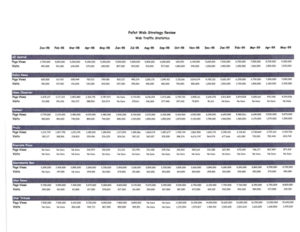In early 1995, PAFET conducted a consumer online market research survey to establish baseline information in order to measure the development of the consumer online market. This document summarizes the goals, approach and results of that study.
[PAFET stands for Partners Affiliated for the Exploration of Technology. In 1994 six media companies [mostly a bunch of newspaper companies] created this research consortium to learn about and evaluate technology that could impact media and support the creation of new businesses and services.]
Some of the highlights of the study:
• The level of familiarity with online services among PC owners and online subscribers is lower than expected. Despite online services’ aggressive subscriber acquisition efforts and heavy media attention given to these services, almost 1 of 4 PC owners considers themselves to be “not at all familiar” with online services.
• Current online users still represent a niche market, that can be characterized as young, affluent, highly educated, and predominantly male. However, improved presentation of online content (via graphical and multimedia technology), faster transmission speeds, better content and lower prices are attracting more mainstream consumers.
• The demographic profile of online subscribers using the Internet and those who do not is very similar.
• Accessing or subscribing to multiple online services is not uncommon among current online service users. One of four online service users reported regularly accessing at least two online services.
• “News and information” remain the top reason non-online users subscribe to a service. The research results showed that, among current online users, the primary reason they chose their current service was for “news and information.” Among those who canceled a subscription within the past six months, “lack of use” and “lack of information” were cited most often as the reasons for the cancellations.
The study’s questionnaire and research methodology were designed by Maritz Research (Los Angeles, CA), PAFET Operating Committee members, and market research directors and managers at each of the newspapers included in the study.
Also included with this post is the presentation made by Maritz Marketing.
